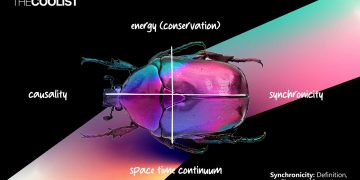Introduction
In today’s world, sustainable development has emerged as one of the most pressing goals that humanity must address. With the rapid depletion of natural resources, environmental degradation, and the growing challenges of climate change, ensuring a sustainable future requires new and transformative approaches. Sustainable development, as defined by the United Nations, involves meeting the needs of the present without compromising the ability of future generations to meet their own needs. Achieving this lofty goal will require not only political will and societal changes but also significant advances in research and innovation across various sectors.
Innovative research plays a crucial role in creating the solutions necessary for sustainable development. From renewable energy technologies to sustainable agriculture practices, breakthrough innovations are driving the transition to more sustainable systems in various industries. The key question is: How does innovative research contribute to achieving sustainable development, and what specific breakthroughs are already shaping the future?
This article explores the role of innovative research in sustainable development, highlighting how it can lead to solutions that protect the environment, promote social equity, and foster economic growth, all while ensuring that these benefits are long-lasting.
1. The Role of Innovation in Sustainable Development
Sustainable development can be divided into three main pillars: environmental sustainability, social sustainability, and economic sustainability. Innovation, in the form of research and technological advancements, has the potential to address challenges in all of these areas. Here, we look at how innovation is transforming each pillar.
A. Environmental Sustainability: Innovations That Protect the Planet
The environmental dimension of sustainability focuses on minimizing environmental degradation and conserving resources. Climate change, biodiversity loss, and resource depletion are the central environmental challenges facing the world today. Innovative research is essential to developing solutions that not only mitigate these impacts but also help restore ecosystems and create a more sustainable relationship between humanity and the planet.
- Renewable Energy Solutions: One of the most significant areas of innovation contributing to environmental sustainability is renewable energy. Solar, wind, hydro, and geothermal energy are at the forefront of this movement. Research in energy storage technologies, such as advanced batteries and grid solutions, is crucial to making renewable energy more reliable and scalable. For example, researchers are working on solid-state batteries that are safer and more efficient than conventional lithium-ion batteries, which could revolutionize energy storage for both electric vehicles and grid applications.
- Carbon Capture and Utilization: As the world moves toward reducing greenhouse gas emissions, carbon capture technologies are being developed to remove carbon dioxide (CO2) directly from the atmosphere. These technologies aim to capture CO2 from industrial emissions and power plants and either store it underground or use it in products like concrete or biofuels. Research into direct air capture (DAC) is also underway, focusing on large-scale methods to remove CO2 from the air. This innovation could play a vital role in achieving global climate goals.
- Sustainable Agriculture: Innovations in agricultural research are essential for producing food in a way that minimizes environmental damage. Precision agriculture, which involves the use of sensors, drones, and data analytics, allows farmers to optimize the use of water, fertilizers, and pesticides, reducing waste and environmental impact. Furthermore, vertical farming and hydroponics—growing crops in controlled environments using minimal land and water—are innovative solutions that can help meet the growing global demand for food while reducing pressure on ecosystems.
- Waste Reduction and Circular Economy: Innovation in waste management and resource efficiency is crucial to promoting a circular economy, in which materials are reused, recycled, and repurposed instead of being discarded. Research into biodegradable materials, such as plant-based plastics and packaging, and technologies that facilitate more efficient recycling are helping to reduce waste. Additionally, innovations in waste-to-energy technologies, such as converting waste into electricity or biogas, are helping to minimize landfill waste while generating energy.
B. Social Sustainability: Innovations That Foster Equity and Well-Being
Social sustainability focuses on creating equitable, inclusive, and resilient societies. Innovation in research can help achieve social sustainability by addressing inequality, improving access to basic services, and fostering inclusive economic growth.
- Health Innovations: Health-related innovations are critical for improving the quality of life, especially in developing regions where access to healthcare is limited. Telemedicine and mobile health platforms have the potential to deliver healthcare to underserved populations, reducing disparities in access to medical services. Additionally, advancements in biotechnology, such as gene editing (e.g., CRISPR), are enabling the development of personalized medicine that can address previously untreatable conditions, improving public health outcomes globally.
- Affordable and Sustainable Housing: Innovations in construction materials and techniques are making it possible to build more sustainable and affordable housing. For example, research into 3D printing technology is revolutionizing the construction industry by enabling the creation of affordable, customized homes in a fraction of the time and cost of traditional methods. Additionally, the use of sustainable materials such as recycled steel, bamboo, and compressed earth can help reduce the environmental footprint of new buildings.
- Education and Digital Inclusion: Innovation in digital technologies, particularly in information and communication technologies (ICT), is helping to bridge the education gap. Online learning platforms, digital classrooms, and e-learning tools are expanding access to education in remote and marginalized communities. This contributes to social sustainability by empowering individuals with the skills and knowledge they need to thrive in a rapidly changing world.
- Social Impact Innovations: Social innovation, through organizations and initiatives that address social challenges such as poverty, inequality, and human rights, is helping to create more equitable societies. For example, microfinance and fintech innovations are helping individuals in developing countries gain access to credit and banking services, fostering economic empowerment. Similarly, innovations in social enterprise and impact investing are helping to direct resources to projects that have a positive social and environmental impact.
C. Economic Sustainability: Innovations That Support Long-Term Prosperity
Economic sustainability involves fostering economic systems that promote prosperity without depleting resources or creating inequitable wealth distribution. Innovation in research is central to achieving economic sustainability by fostering new business models, promoting green economies, and driving growth in emerging industries.
- Green Technologies and Clean Business Models: The transition to a green economy, one that decouples economic growth from environmental harm, is a central aspect of economic sustainability. Innovative technologies in clean energy, electric vehicles, and energy efficiency are creating new industries and job opportunities. For instance, the rise of the electric vehicle (EV) market has not only helped reduce emissions but has also spurred innovation in battery manufacturing, smart charging systems, and the broader green technology sector.
- Sustainable Manufacturing and Industry: Innovations in sustainable manufacturing processes, such as the use of renewable energy in industrial production, more efficient supply chain management, and reducing resource consumption, are helping businesses achieve greater sustainability. For example, additive manufacturing (3D printing) has the potential to reduce waste in the manufacturing process by creating products on demand, rather than producing items in bulk and discarding excess stock.
- Sustainable Investment: The financial sector is increasingly recognizing the importance of sustainable investments. Research into environmental, social, and governance (ESG) criteria is helping investors evaluate companies and projects based on their sustainability practices. Additionally, innovations in green bonds, impact investing, and sustainable finance are helping to direct capital toward projects that contribute to long-term economic sustainability.

2. The Importance of Policy and Collaboration in Supporting Innovation
While innovation research is essential for achieving sustainable development, it is not enough on its own. For technological advancements to have a lasting and widespread impact, supportive policies and international collaboration are crucial.
- Policy Support: Governments play a vital role in shaping the direction of sustainable innovation through policies that promote research and development, incentivize green technologies, and support sustainable business practices. For example, carbon pricing, subsidies for renewable energy, and regulations that require companies to reduce their environmental impact can all encourage innovation in sustainability.
- Global Cooperation: Many of the challenges we face, such as climate change, require a collective global effort. International collaboration in research and innovation is essential to tackling these challenges. Initiatives like the Paris Agreement on climate change are examples of how countries can come together to set ambitious sustainability goals and share technologies and knowledge to achieve them.
- Public-Private Partnerships: Collaboration between governments, research institutions, and private companies is key to advancing sustainable innovations. Public-private partnerships can help bring cutting-edge technologies to market, provide funding for large-scale projects, and ensure that innovations are deployed in ways that benefit society as a whole.
3. Conclusion: Innovation as the Key to Sustainable Development
Innovation research is one of the most powerful tools we have in the pursuit of sustainable development. Whether it’s through renewable energy technologies that reduce environmental harm, health innovations that improve the well-being of populations, or green economic models that foster long-term prosperity, research and innovation are central to creating a more sustainable world.
However, for these innovations to have the desired impact, they must be accompanied by strong policy support, international collaboration, and a commitment to ensuring that the benefits of innovation are widely distributed. Achieving sustainable development is a complex and ongoing challenge, but with continued research, innovation, and cooperation, we can move closer to a future where people and the planet thrive together.
In summary, innovation research is not just a catalyst for change—it is the engine that drives us toward the realization of a sustainable future.

















































Discussion about this post